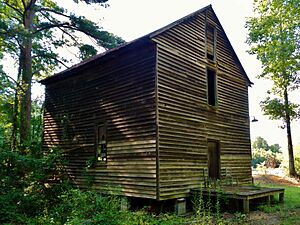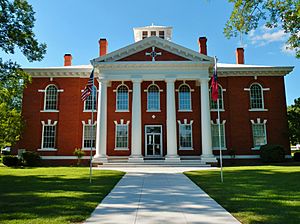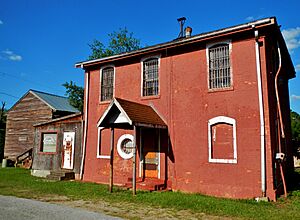National Register of Historic Places listings in Webster County, Georgia facts for kids
Webster County, Georgia, is home to some really special places that are listed on the National Register of Historic Places. This is like a national list of buildings, sites, and objects that are important to American history. When a place is on this list, it means it's recognized for its unique story and is often protected so future generations can enjoy it too. Let's explore some of these cool historic spots in Webster County!
Contents
Historic Places in Webster County
Boyd Mill Place: A Glimpse into the Past
One of the interesting places on the list is the Boyd Mill Place, located at 580 Mill Pond Road in Weston. This site is also known by other names, like "Davenport's Mill" and "Hearon's Mill." Mills were super important in the past because they helped grind grains like corn into flour, which was a basic food item. This mill tells a story of how people lived and worked a long time ago in Webster County. It was added to the National Register of Historic Places on September 24, 2009.
Webster County Courthouse: A Center of Community
In Preston, you'll find the Webster County Courthouse on Courthouse Square. This building is a really important part of the community because it's where local government decisions are made and where many official records are kept. The current courthouse was built in 1915. It was designed in the Neoclassical Revival style, which means it looks a bit like ancient Greek and Roman buildings with its grand columns and balanced design. It became a historic landmark on September 18, 1980.
Webster County Jails: Two Buildings, One History
Also in Preston, on an unnamed city street where Cass Street and Old Post Office Road meet, are the Webster County Jails. What's cool about this site is that it includes two different jail buildings! The first jail, made of wood, was built between 1855 and 1856. This wooden building was used to hold prisoners for many years. Later, a new brick jail was built in 1910. The brick jail then took over the job of housing prisoners. These two buildings together show how the county's needs for a jail changed over time. They were added to the National Register of Historic Places on March 3, 2000.




